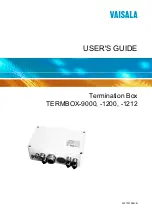
System Management
7950 SR OS Basic System Configuration Guide
Page 235
Nonstop Forwarding
In a control plane failure or a forced switchover event, the router continues to forward packets
using the existing stale forwarding information. Nonstop forwarding requires clean control plane
and data plane separation. Usually the forwarding information is distributed to the XCMs/XMAs.
Nonstop forwarding is used to notify peer routers to continue forwarding and receiving packets,
even if the route processor (control plane) is not working or is in a switch-over state. Nonstop
forwarding requires clean control plane and data plane separation and usually the forwarding
information is distributed to the line cards. This method of availability has both advantages and
disadvantages. Nonstop forwarding continues to forward packets using the existing stale
forwarding information during a failure. This may cause routing loops and black holes, and also
requires that surrounding routers adhere to separate extension standards for each protocol. Every
router vendor must support protocol extensions for interoperability.
Nonstop Routing (NSR)
With NSR on the 7950 XRS-Series routers devices, routing neighbors are unaware of a routing
process fault. If a fault occurs, a reliable and deterministic activity switch to the inactive control
complex occurs such that routing topology and reachability are not affected, even in the presence
of routing updates. NSR achieves high availability through parallelization by maintaining up to
date routing state information, at all times, on the standby route processor. This capability is
achieved independently of protocols or protocol extensions, providing a more robust solution than
graceful restart protocols between network routers.
The NSR implementation on the 7950 XRS-Seriesrouters supports all routing protocols. NSR
makes it possible to keep the existing sessions (BGP,LDP, OSPF, etc.) during a CPM switchover,
including support for MPLS signaling protocols. Peers will not see any change.
Protocol extensions are not required. There are no interoperability issues and there is no need to
define protocol extensions for every protocol. Unlike nonstop forwarding and graceful restart, the
forwarding information in NSR is always up to date, which eliminates possible blackholes or
forwarding loops.
Traditionally, addressing high availability issues have been patched through non-stop forwarding
solutions. With the implementation of NSR, these limitations are overcome by delivering an
intelligent hitless failover solution. This enables a carrier-class foundation for transparent
networks, required to support business IP services backed by stringent SLAs. This level of high
availability poses a major issue for conventional routers whose architectural design limits or
prevents them from implementing NSR.
Содержание 7950 XRS Series
Страница 8: ...Page 8 7950 SR OS Basic System Configuration Guide List of Tables...
Страница 10: ...Page 10 7950 SR OS Basic System Configuration Guide List of Figures...
Страница 14: ...Preface Page 14 7950 SR OS Basic System Configuration Guide...
Страница 46: ...VI Editor Page 46 7950 SR OS Basic System Configuration Guide...
Страница 76: ...File Management Tasks Page 76 7950 SR OS Basic System Configuration Guide...
Страница 78: ...File Command Reference Page 78 7950 SR OS Basic System Configuration Guide...
Страница 92: ...Basic Command Reference Page 92 7950 SR OS Basic System Configuration Guide show system candidate...
Страница 172: ...Basic CLI Commands Page 172 7950 SR OS Basic System Configuration Guide...
Страница 184: ...Configuration Notes Page 184 7950 SR OS Basic System Configuration Guide...
Страница 214: ...DNS Configuration Commands Page 214 7950 SR OS Basic System Configuration Guide...
Страница 220: ...Show Commands Page 220 7950 SR OS Basic System Configuration Guide...
Страница 494: ...System Commands Page 494 7950 SR OS Basic System Configuration Guide...
Страница 500: ...Standards and Protocols Page 500 Standards and Protocols...
Страница 502: ...Index Page 502 7950 SR OS Basic System Configuration Guide system parameters 252 system time elements 256 timing 294...
















































